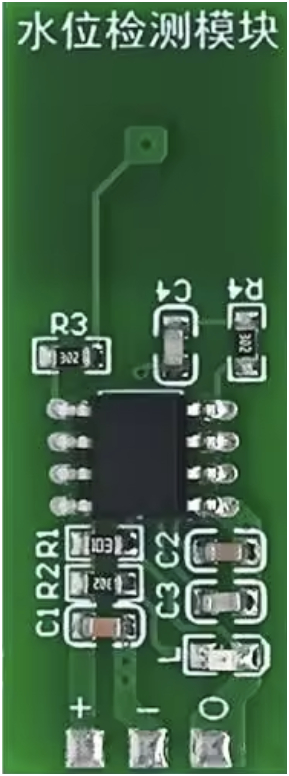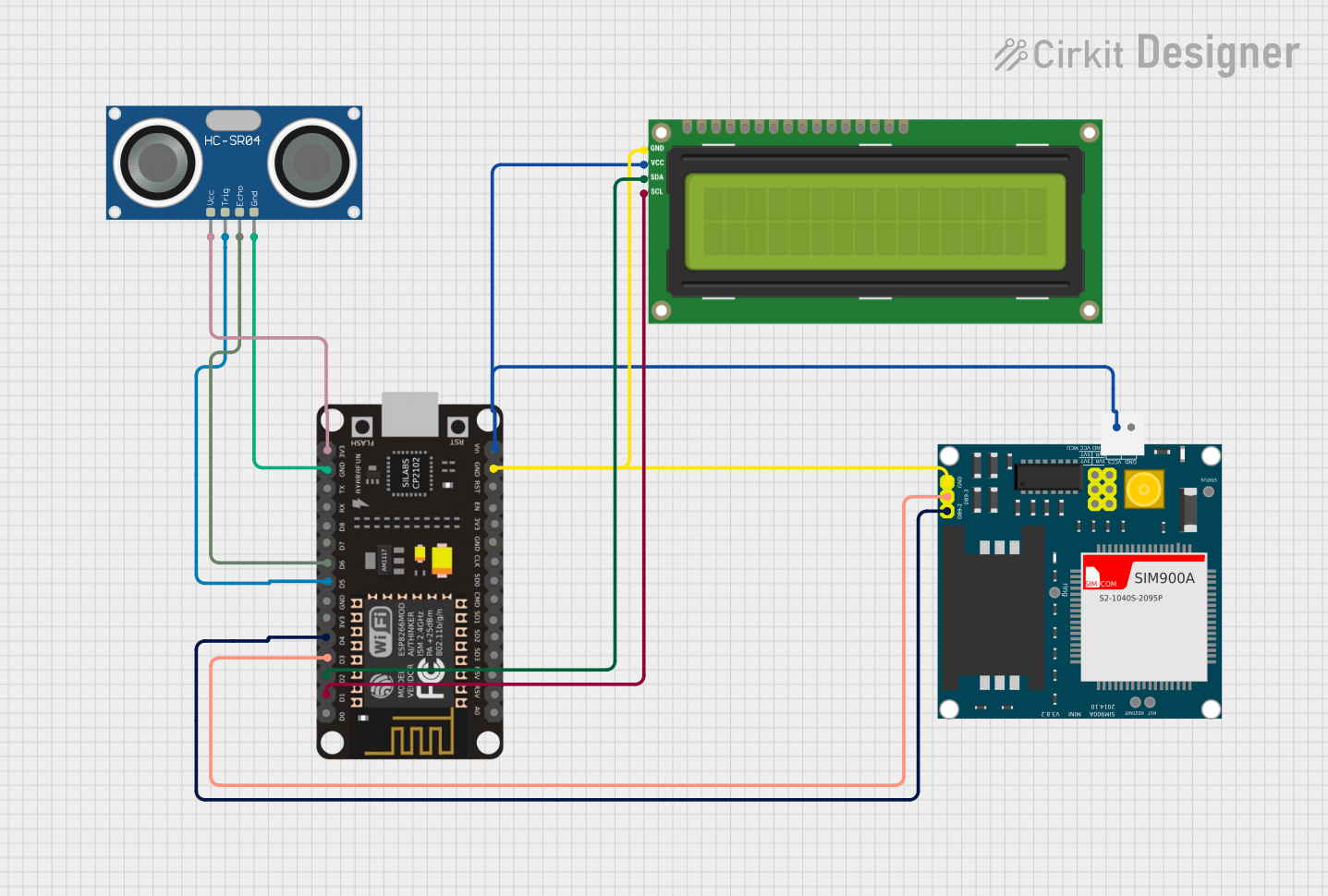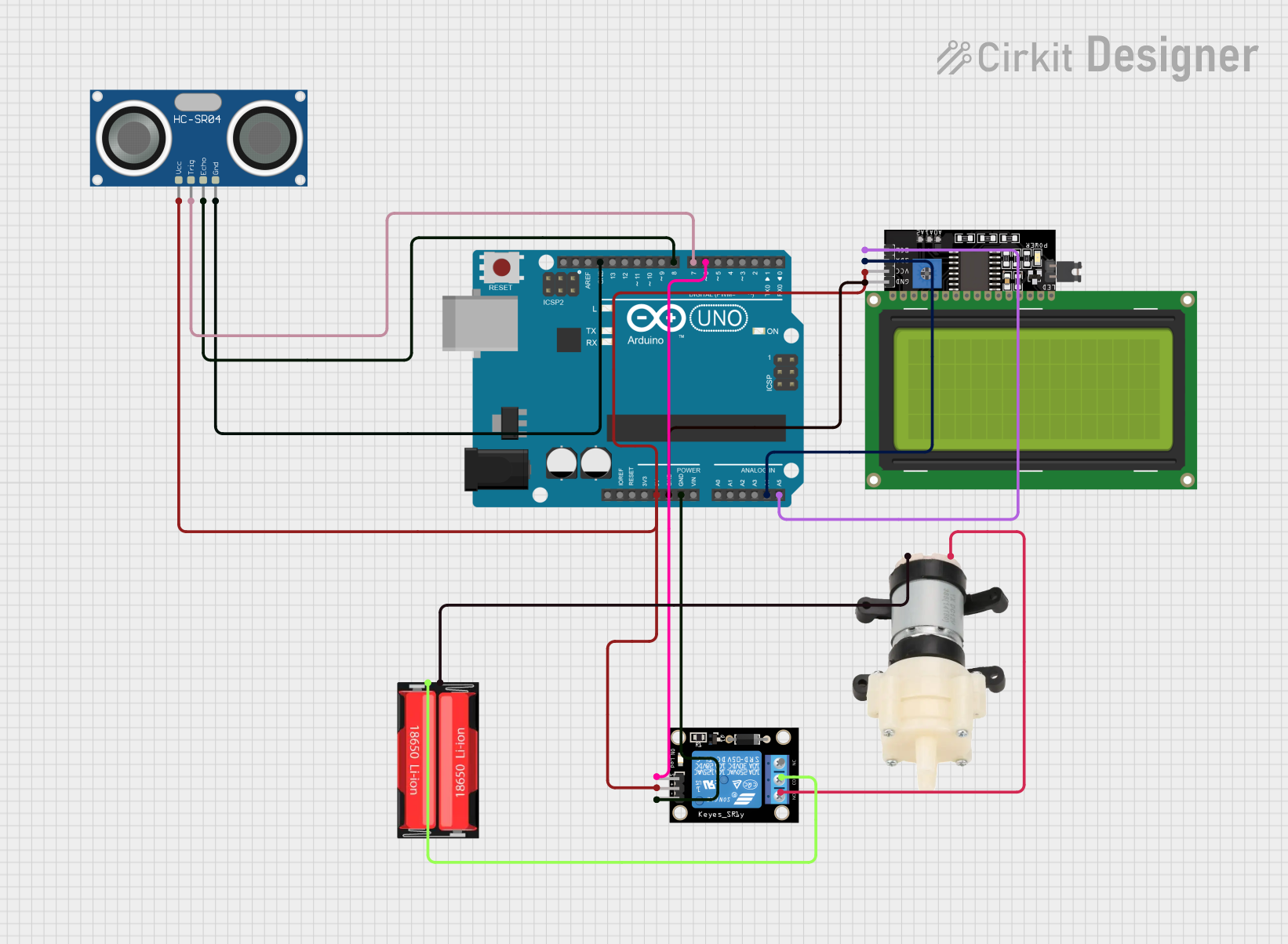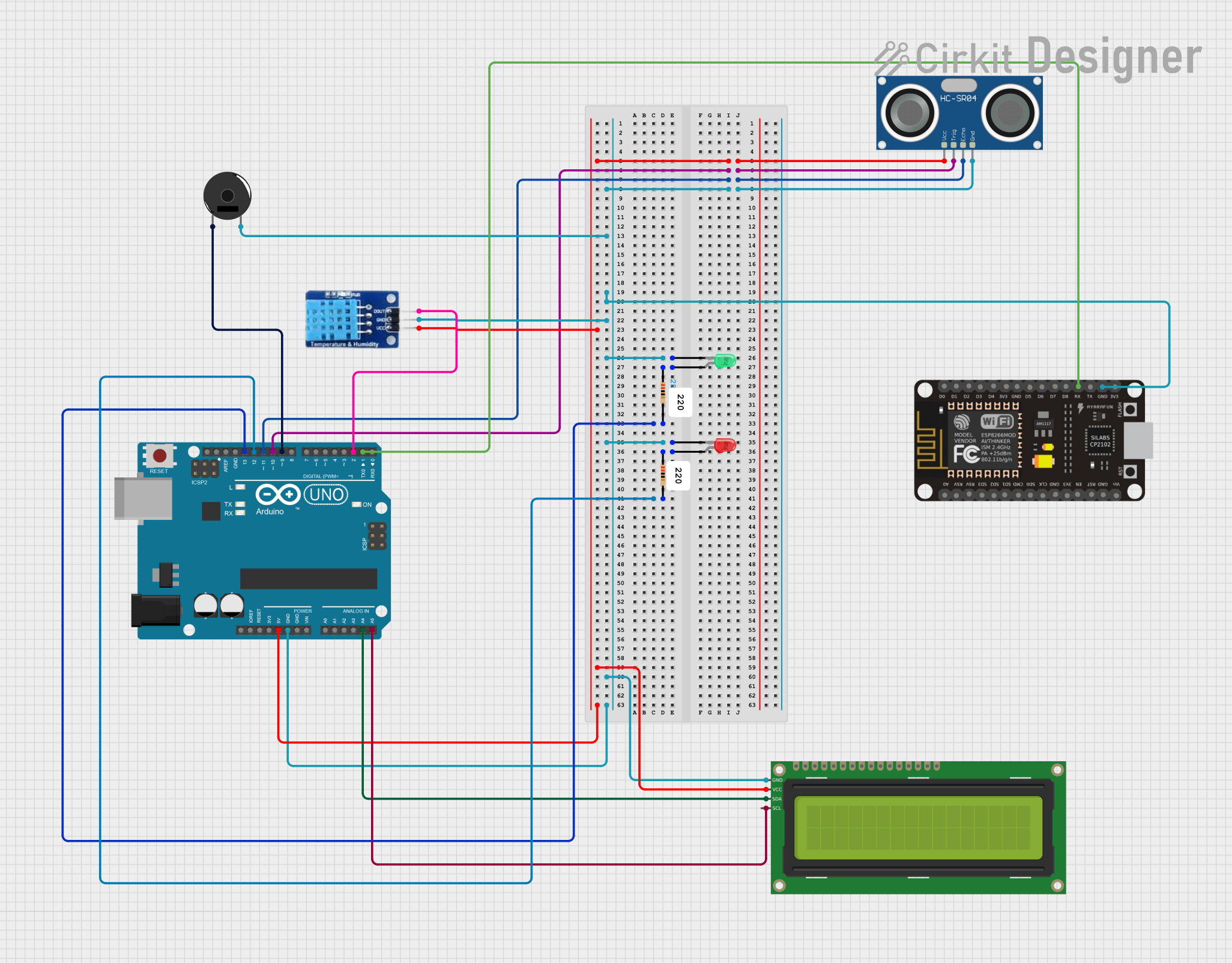
How to Use Water Level Detection Module: Examples, Pinouts, and Specs

 Design with Water Level Detection Module in Cirkit Designer
Design with Water Level Detection Module in Cirkit DesignerIntroduction
The Water Level Detection Module (ESP32 M04) is a versatile electronic component designed to measure the level of water in tanks, reservoirs, or other liquid storage systems. It uses sensors to detect the presence or absence of water at various levels and provides output signals for monitoring or control purposes. This module is ideal for applications requiring water level monitoring, such as automated water pumps, irrigation systems, and water tank overflow prevention.
Explore Projects Built with Water Level Detection Module

 Open Project in Cirkit Designer
Open Project in Cirkit Designer
 Open Project in Cirkit Designer
Open Project in Cirkit Designer
 Open Project in Cirkit Designer
Open Project in Cirkit Designer
 Open Project in Cirkit Designer
Open Project in Cirkit DesignerExplore Projects Built with Water Level Detection Module

 Open Project in Cirkit Designer
Open Project in Cirkit Designer
 Open Project in Cirkit Designer
Open Project in Cirkit Designer
 Open Project in Cirkit Designer
Open Project in Cirkit Designer
 Open Project in Cirkit Designer
Open Project in Cirkit DesignerCommon Applications and Use Cases
- Water Tank Monitoring: Automatically detect and maintain water levels in storage tanks.
- Irrigation Systems: Control water flow based on soil or tank water levels.
- Flood Detection: Monitor water levels in flood-prone areas.
- Industrial Automation: Manage liquid levels in industrial processes.
- Home Automation: Integrate with smart home systems for water management.
Technical Specifications
The following table outlines the key technical details of the ESP32 M04 Water Level Detection Module:
| Parameter | Specification |
|---|---|
| Manufacturer | ESP32 |
| Part ID | M04 |
| Operating Voltage | 3.3V to 5V DC |
| Operating Current | ≤ 20mA |
| Output Type | Digital (High/Low) and Analog Signal |
| Detection Range | 0 to 100% water level |
| Sensor Type | Capacitive or Resistive (varies) |
| Dimensions | 50mm x 20mm x 10mm |
| Operating Temperature | -10°C to 60°C |
| Interface | 3-pin (VCC, GND, Signal) |
Pin Configuration and Descriptions
The module has a 3-pin interface for easy integration into circuits. The pin configuration is as follows:
| Pin | Name | Description |
|---|---|---|
| 1 | VCC | Power supply input (3.3V to 5V DC). Connect to the positive terminal of the power source. |
| 2 | GND | Ground connection. Connect to the negative terminal of the power source. |
| 3 | Signal | Output signal pin. Provides a digital HIGH/LOW or analog voltage based on water level. |
Usage Instructions
How to Use the Component in a Circuit
- Power the Module: Connect the VCC pin to a 3.3V or 5V DC power source and the GND pin to the ground.
- Connect the Signal Pin:
- For digital output, connect the Signal pin to a digital input pin on a microcontroller (e.g., ESP32 or Arduino UNO).
- For analog output, connect the Signal pin to an analog input pin on the microcontroller.
- Place the Sensor: Submerge the sensor in the water tank or reservoir at the desired level for detection.
- Read the Output:
- A HIGH signal indicates water presence, while a LOW signal indicates absence (for digital mode).
- For analog mode, the voltage varies proportionally with the water level.
Important Considerations and Best Practices
- Power Supply: Ensure the module is powered within the specified voltage range (3.3V to 5V DC).
- Sensor Placement: Position the sensor securely to avoid false readings due to movement or turbulence.
- Water Type: The module may behave differently in pure, distilled, or highly conductive water. Test in your specific application.
- Signal Noise: Use proper grounding and shielding to minimize noise in the output signal.
- Arduino Compatibility: The module is compatible with Arduino UNO and other microcontrollers. Below is an example code snippet for interfacing with an Arduino UNO.
Example Code for Arduino UNO
// Water Level Detection Module Example Code
// This code reads the digital and analog output of the module and displays
// the water level status on the serial monitor.
const int signalPin = A0; // Signal pin connected to analog pin A0
const int digitalPin = 2; // Signal pin connected to digital pin 2
void setup() {
pinMode(digitalPin, INPUT); // Set digital pin as input
Serial.begin(9600); // Initialize serial communication
}
void loop() {
int analogValue = analogRead(signalPin); // Read analog signal
int digitalValue = digitalRead(digitalPin); // Read digital signal
// Display analog water level value
Serial.print("Analog Water Level: ");
Serial.println(analogValue);
// Display digital water presence status
if (digitalValue == HIGH) {
Serial.println("Water Detected (Digital Output: HIGH)");
} else {
Serial.println("No Water Detected (Digital Output: LOW)");
}
delay(1000); // Wait for 1 second before the next reading
}
Troubleshooting and FAQs
Common Issues Users Might Face
No Output Signal:
- Cause: Incorrect wiring or insufficient power supply.
- Solution: Double-check the connections and ensure the power supply is within the specified range.
Inconsistent Readings:
- Cause: Sensor movement or water turbulence.
- Solution: Secure the sensor in a stable position and avoid placing it near water inlets.
Analog Output Not Varying:
- Cause: Faulty sensor or improper connection to the analog pin.
- Solution: Test the sensor with a multimeter and verify the analog pin connection.
Digital Output Always HIGH or LOW:
- Cause: Sensor not submerged or damaged.
- Solution: Ensure the sensor is properly submerged and test with a known water level.
Solutions and Tips for Troubleshooting
- Test the Module Independently: Before integrating into a larger system, test the module with a simple circuit to verify functionality.
- Check for Corrosion: If the module is used in harsh environments, inspect for corrosion or damage to the sensor.
- Use Pull-Up Resistors: For digital output, use pull-up resistors if the signal is unstable.
- Monitor Power Supply: Ensure a stable and noise-free power supply to avoid erratic behavior.
By following this documentation, users can effectively integrate and troubleshoot the ESP32 M04 Water Level Detection Module in their projects.